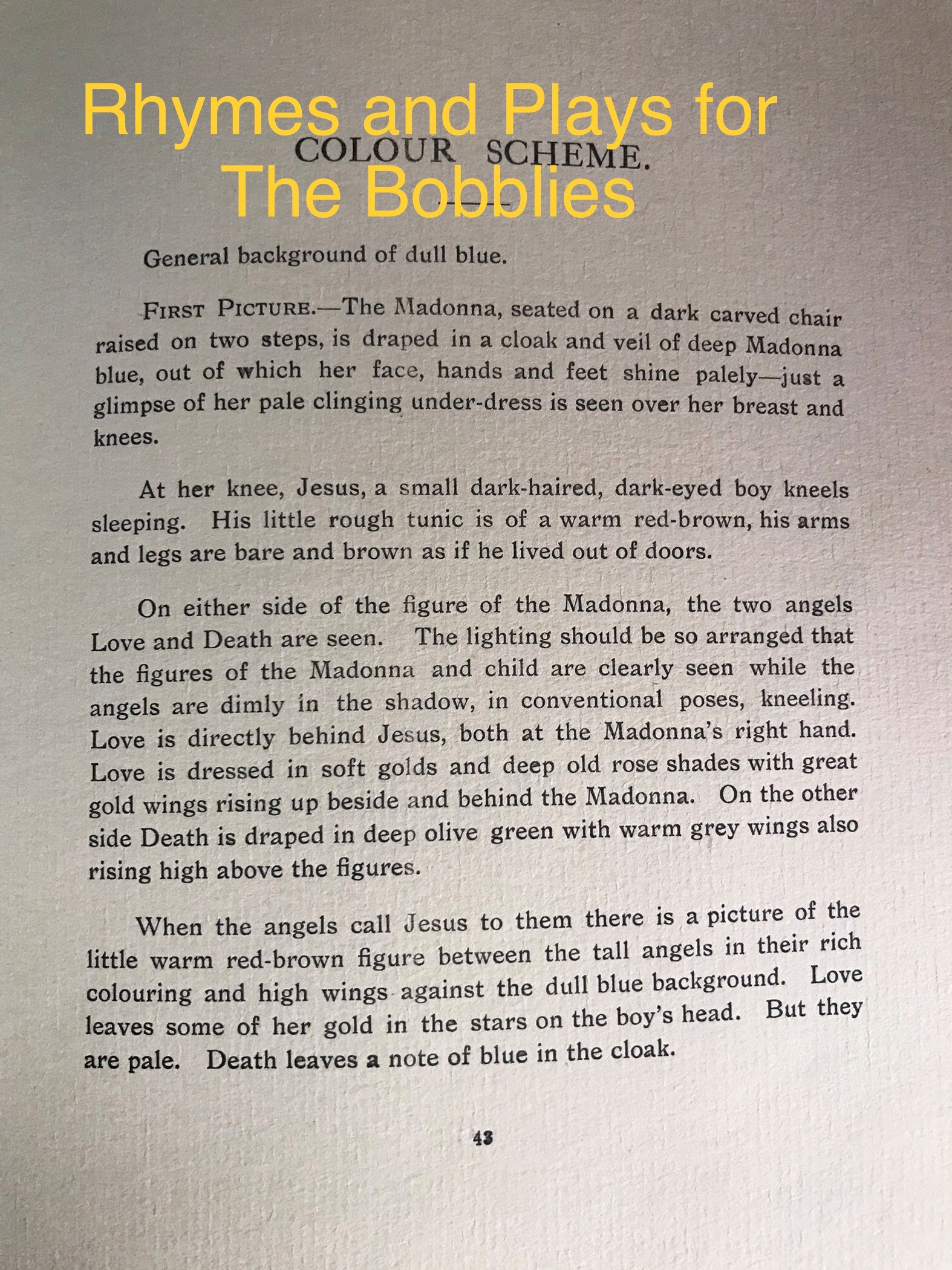Colour Theory
Colour Theory
Costume design and production were another two areas where Irene Mawer excelled. In her book Rhymes and Plays for The Bobblies (Bobblies being small children) she gives a wonderful description of how she envisaged one of the scenes.
On this occasion, the scene was a religious depiction of the Madonna and two angels. It assumes that the reader would know the colour ‘Madonna blue’ and indeed, anyone brought up in a Christian faith would know this to be the pale blue of every statue and painting of the Virgin Mary, signifying her purity, her status and her heavenly connection. Given that Mawer was brought up in England in the 20th Century, this depiction would have been very normal to her and to those around her.
The dark carved chair on which the Madonna is sitting would also be a familiar sight, both in Victorian households and also in the carved pews of churches, and would likely inspire images of kings and queens of England, especially as it is raised up on two steps, like a throne, a befitting seat for portraying the Holy Mother of God.
Jesus is shown as sleeping while kneeling against the Madonna’s legs – a pretty image, but a bit of a strange position in which to fall asleep!
Love, and Death are personified as angels (if personification can apply to angels?)
Love, and the boy Jesus are, as would be expected, are honoured and given high status by being placed on the right-hand side of the Madonna. Death is on the left-hand side, but I would guess that this was more to balance the picture rather than expressing anything sinister.
The final paragraph presumably depicts a scene further along in the play.
What Irene Mawer is focussing on in these particular stage directions are not just the grouping, but the colours that the audience will see, and to some extent, experience. The colours are very typical of Mawer’s era in England and combine beautifully.
The colours used are
- pale blue (it is impossible to say the exact colour of Mawer’s version of the Madonna’s veil, but the blue of her garments are usually a soft blue or blue-grey);
- dull blue;
- dark brown for the carved chair and Jesus’ eyes;
- pale pink (this Madonna would be a white woman);
- white (I am guessing at the glimpse of pale under-dress);
- warm red-brown for Jesus’ skin tone (more for his outdoor life, rather than his ethnicity);
- soft golds for the clothing and wings of Love;
- deep old rose shades (Love). These would have been very beautiful shades of deep pink, ranging to almost black;
- deep olive green (Death’s clothing);
- warm grey (Death’s wings).
Pale blue, dull blue, pale pink, white, dark brown, warm red-brown, soft golds, deep pinks, deep olive green, warm grey. It sounds absolutely gorgeous!
And Miss Mawer goes further, in that she gives instructions for the lighting (the technical aspects of which the young students at the Ginner-Mawer School would have had to organise for themselves). Mawer directs that the main focus should be the Madonna and child, and the two angels should be in a dim light.
To complete the picture, we have instructions for the grouping of the actors – a very typical styling that works well to this day, with Mary in the middle and the the other three figures kneeling around her.

